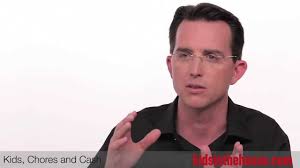A New Stock Market Game that Rewards Patience and Diversification
November 6, 2018
October 31, 2018

Social media, and the Internet as a whole, have been taking a lot of flak lately for some good reasons: privacy issues, of course, but also for the spread of fake news, disinformation, hate messages, and cyberbullying.
These are not small or passing concerns. On the same day this week, New York Times columnist Frank Bruni proclaimed that “the Internet will be the death of us” while Times contributor Kara Swisher declared social media was a “monster.”
Bruni noted that Cesar Sayoc, alleged to have sent pipe bombs to political enemies of President Trump, and Robert Bowers, accused of murdering 11 Jewish Americans in Pittsburgh, were both radicalized online. “Enclaves of the internet warped the worldviews of all of these men, convincing them of the primacy and purity of their rage,” Bruni writes.
Swisher, also taking note of these and other thugs, calls social media a “monster” that is “designed so that the awful travels twice as fast as the good.” Awful, by the way, includes poor financial practices, which are nothing next to the online spread and nurturing of outright evil. But it is a notable concern nonetheless.
Two-thirds of Millennials say they do not understand how people in their social network afford the lifestyles they portray online, according to a study from Fidelity Investments. An equal share says social media, which spreads FOMO (fear of missing out) like a weed, has a negative impact on their finances.
You may know FOMO as keeping up with the Joneses. So, yes, it is an ages old thing. But social media…
• • •
…acts like a steroid, magnifying the effect through so many connected friends, family members, and casual acquaintances. Young people, especially, are hyperaware of what others are doing.
The most damaging part is that social media almost never tells the full story. So, while a young person may be envying a friend that posted smiling Instagram shots on a three-mast, tall ship in the San Francisco Bay-and wondering where they got the cash-the full story is that this friend was on a 15-minute break from their side gig swabbing the decks for a tech billionaire.
Young people are highly susceptible to this kind of imaging. One in five Millennials say FOMO experienced via social media is a major driver of splurging, vs. just 6% of their boomer parents, Fidelity found. Financial educators should consider lessons around the rose-colored nature of social media, helping students to understand that much of what they see online is an illusion. They would do well to avoid temptation. Youngsters tend to have the notion that they have to achieve everything that their favorite influence has done. What they don’t realize is that these influencers use these mediums to earn their living. They might make use of agencies (click Here to learn more) to grow their followers count, blindly follow every trend, promote small products, and so on. At the end of the day, those people are earning their bread through those wages. But that does not mean they come openly and declare all these things on their social media platforms. So, people need to be sensible enough on what to filtrate and incorporate into their lives if they are planning to seek inspiration from social media profiles.
Better to set goals and stay with them. Paying down debt, saving for retirement, building an emergency fund, or saving for a down payment on a house are good places to start. Two-thirds of Millennials say they would be motivated to save for such things if they could better visualize the result. An illustration of compound growth might keep young people on track. Only 9% say their social network encourages them the save.
Another strategy is asking young people to look beyond their expenditure to how it will make them feel later. Blowing a paycheck on a weekend trip you don’t really care about, just to not miss out, is an empty feeling. Spend discretionary money on things that make you happy.
The ills of social media notwithstanding, young people are doing a fair job of balancing today’s wants and needs with their future financial security, Fidelity found. Two-thirds say that saving is as gratifying as splurging.
Millennials are far more likely than older generations to value things like therapy and counseling to tend to their mental health. Millennials say paying essential living expenses, building an emergency fund, and saving for retirement are their top three financial priorities.
So even if the Internet has emerged as a great spreader of evil and confusion-and throws temptation in our face every day-young people are doing alright, even if they could be doing better.
Bruce Springsteen has always been a storyteller. Yet last year, at age 68, he found a whole new way to tell stories-on Broadway-and a whole new batch of stories to tell.
Mixed in with his older songs about working class rebellion and romances that ended badly, the Boss recounts tales of his life now to packed audiences at the Walter Kerr theater in New York City. Like how he dances with his mother, who has Alzheimer’s disease. And how much he misses his longtime friend and sax player Clarence Clemons, who died in 2011 after complications from a stroke at age 69, just a year older than Springsteen is now.
“Aging is scary but fascinating,” Springsteen wrote in his 2016 memoir Born to Run. “And great talent morphs in strange and often enlightening ways.”
Springsteen calls it morphing but the more common term these days is reinvention.
Whatever word you use, the dynamics are the same: You reach a turning point in your life when outside forces and inner yearnings combine to convince you that you need a new path to remain vital and relevant. Enlightenment is what happens, hopefully, along the way.
How Venmo is Changing the Rules of Financial Education
With ‘Chatbots’ Will We Need Financial Education?
How Venmo is Changing Personal Finance
Cardless Cash Part of Financial Literacy Landscape
Posted in Policy & Government on October, 2018
Sign Up to receive the Right About Money Report
Sign Up to receive the Right About Money Weekly Digest
|
Tired of Your Cubicle? Try a Trade Read More |
|
What Monkeys Can Teach Us About Money Read More |
|
Maryland bills call for financial literacy courses in schools, prisons Read More |
|
England faces ‘crisis’ in adult financial literacy Read More |
|
How to explain to a child when you can’t (or don’t want to) buy something Read More |
|
The future of financial education Read More |
|
CFPB issues fifth Financial Literacy Annual Report Read More |
|
Arkansas Schools To Teach Financial Literacy Read More |
|
Eureka! to foster STEM education for girls in Pittsfield Read More |
|
Money on the mind: Personal finances a major stressor for many Canadians Read More |
|
How Nostalgia Can Help You Save Money Read More |
|
Financial literacy topping Treasurer Fitch’s platform Read More |
|
Apps to make your kids smart about money Read More |
|
Study reveals how personal keepsakes can help you save money Read More |
|
Personal finance seen as big gap in Mass. education landscape Read More |
|
UK investors feel let down over financial education Read More |
|
State senator pre-files financial literacy bill Read More |
|
Missouri financial literacy programs promote importance of loan repayment Read More |
|
Visa launches interactive financial literacy-themed play Read More |
|
AI is disrupting the labor market. Here’s what educators need to know Read More |
|
Missouri adopts revised personal finance standards for students Read More |
|
94% of Americans failed this financial quiz—here are the 4 hardest questions Read More |
|
Child’s higher education more important than retirement saving for Indians: Survey Read More |
|
India moves closer towards achieving its goal of financial inclusion Read More |
|
Cashless kids: Is tap-and-go technology promoting financial illiteracy? Read More |
|
Young Adults Say Financial Literacy Offers More Benefits than Other High School Subjects Read More |
|
Fiji Ministry of Education takes up stewardship of Financial Education Program Read More |
|
Why everyone’s racing to help us know more about money Read More |
|
‘Financial capability’ should be part of school curriculum says Retirement Commissioner Read More |
|
The Simple Reason Millennials Are Saving More for Retirement Read More |
|
Dodgers and unlikely teammates help local kids hit a home run Read More |
|
Biz Kid$ financial education TV program returns for Season 6 Read More |
|
Why Law School Students Need a Financial Education, Too Read More |
|
Habitat NZ looks to build financial literacy in Samoa Read More |
|
Why there needs to be a ‘financial fitness revolution’ Read More |
|
Regulators in India team up for financial inclusion Read More |
|
Regent universities will ask new students to complete online financial literacy course Read More |
|
How parents can prepare children to handle wealth after inheritance Read More |
|
Prudential Cambodia achieves major milestone Read More |
|
Older Women Flunk Financial Literacy Quiz Read More |
|
Some different advice for this year’s graduates Read More |
|
3 biggest money mistakes you’re teaching your kids Read More |
|
More Australian students to benefit from new funds for financial literacy Read More |
|
Two Surveys Reveal Financial Literacy, Behaviors of Millennials and Gen Z Read More |
|
Sabah lauds move to raise financial literacy Read More |
|
New Florida law requires colleges to spell out student debt Read More |
|
Creating capacity and capability in India’s wealth sector Read More |
|
Stash Secures $40M in Funding to Meet Demand for Its Financial Education Platform Read More |
|
Use summer break to teach your children about finances Read More |
| Read More |
|
Companies offer “financial wellness” programs as a job perk Read More |
|
Equifax and Junior Achievement Americas Expand Financial Inclusion Program in Latin America Read More |
|
Chauncey Billups serves Denver youth as rumors with Cavs swirl Read More |
|
Financial literacy can lower political cost of pension reform Read More |
|
Why It Pays To Start Financial Education Early Read More |
|
Ask an Attorney: How can I teach my child about finances? Read More |
|
Most of us are overconfident about our financial knowledge – that’s a risk Read More |
|
Why does China top the ranking in financial literacy? Read More |
|
House subcommittee hearing looks at impact, opportunities of fintech Read More |
|
Why India needs to work on financial literacy now more than ever Read More |
|
Education system overhaul should include new emphasis on financial literacy Read More |
|
ARE YOU EMBRACING THE 4 C’S OF FINANCIAL LITERACY? Read More |
|
Survey Shows Those Working WIth Advisors Less Financially Literate Read More |
|
NBA Philippines draws up new gameplan for financial planning Read More |
|
Dollars and sense: Canadian teens rank among highest internationally in financial literacy Read More |
|
Atomic Weapons Establishment launches online financial education program Read More |
|
High school seniors learn how to save now so they can spend later Read More |
|
USAA Invests Nearly $2 Million in STEM, Financial Literacy Hub Read More |
|
Ontario elementary students MUST get financial literacy lessons too Read More |
|
Students learn financial literacy with lemonade Read More |
|
Why technology is key to financial wellness success Read More |
|
Rural financial education project launched in Beijing Read More |
|
Canadians Share What They Wish They Learned About Money Read More |
|
Too Many Products, Not Enough Education Hampers Financial Wellness Plans Read More |
|
48% say financial education would help them save for retirement Read More |
|
High schoolers can now earn a $1,000 scholarship for completing a free financial literacy course Read More |
|
Encourage financial literacy by speaking to clients’ emotional priorities Read More |
|
SHIFTING FROM FINANCIAL EDUCATION TO FINANCIAL CAPABILITY Read More |
| Read More |
|
Raise your financial literacy and become a banking guru Read More |
|
study shows students want better financial information sooner Read More |
|
Is It Racist to Teach Students Financial Literacy Read More |
|
New Charity Makes Financial Education Accessible to Everyone Read More |
|
7 Steps Toward Financial Literacy For Your Children Read More |
|
Portugal to boost financial literacy of football players Read More |
| Read More |
|
How Financial Knowledge Drives Wealth Inequality Read More |
|
Investment Platform Stash Reveals Findings from First Financial Literacy Survey Read More |
|
Kerala Gramin Bank reaches out to schools with financial literacy agenda Read More |
|
Only 24% of irish people believe they are financially savvy Read More |
|
What Makes Workplace Financial Education Work? Read More |
|
Professors give themselves a ‘B’ in financial literacy Read More |
|
Lack of Financial Literacy Costs Americans over $9,700 across their Lifetimes Read More |
|
As More Women Become Leaders, Financial Literacy Is a Key Ingredient Read More |
|
New Personal Finance Index Identifies Gaps In Financial Literacy Among American Adults Read More |
| Read More |
|
BANZAI, 10,000 YEARS OF FINANCIAL LIFE Read More |
|
‘Is that a want or a need?’ Financial literacy starts in 4th grade Read More |
|
Lawmaker says NJ school kids should learn about student debt Read More |
|
Financial Mistakes We Can Avoid If We Learn About Money Earlier In Life Read More |
|
Financial literacy essential for growing generations Read More |
|
Law would require Nevada schools to teach financial literacy Read More |
|
Students struggle with financial literacy amidst rising costs Read More |
| Read More |
|
Advisers not best to teach financial literacy, ASIC says Read More |
|
Florida Lawmakers: High Schoolers Need More Financial Literacy Read More |
|
Financial literacy paradox: Banking curriculum Read More |
|
Are UK employees crying out for financial wellbeing training? Read More |
|
The Future Of Financial Education: The Financial Sector Needs To Step-up Read More |
|
RBI asks Financial Literacy Centres to hold special camps on going digital Read More |
|
Past-Due Medical Debt, Partially Linked to Financial Literacy, Has Declined Read More |
|
BUILDING FINANCIAL LITERACY IN HIGH SCHOOL SO KIDS DON’T RACK UP HUGE COLLEGE LOANS Read More |
|
Helping financial educators pave the road to higher credit education in Mississippi Read More |
|
Campaign aims to increase money-management skills Read More |
|
New Finance Center at HSSU Aims to Address Financial Literacy Read More |
|
BUSINESSES MUST SUPPORT FINANCIAL EDUCATION IN SCHOOLS Read More |
|
Treasurer Fitch Pushes Gender Pay, Financial Literacy Despite Bills Dying Read More |
|
Wealth Inequality and Financial Education during the Trump Administration Read More |
|
Hong Kong’s Inaugural Money Month Launched Read More |
|
Designing an Effective Financial Literacy Program Read More |
|
Military personnel speak up for beleaguered consumer agency Read More |
|
$2M donation will create financial education center in Bismarck Read More |
|
Director Richard Cordray Remarks at Financial Literacy and Education Commission Read More |
|
Courage, not Literacy, Key to Financial Wellness Read More |
|
Questioning the Value of Financial Education Read More |
|
4 in 5 financial advisers in Australia willing to volunteer coaching financial literacy Read More |
|
Quebec high school finance course ‘concocted by the banks,’ according to unions Read More |
|
Junior Achievement Worldwide Launches A Version In Ghana Read More |
|
Colorado Attorney General launches FinLit program at Mountain View Core Knowledge Read More |
|
Lack of financial literacy a setback Read More |
|
Schwab to Fund Matching Donations for Financial Literacy Projects in Public Schools Read More |
| Read More |
|
Student Investing Championship Launched to Find Best University Student Talent Read More |
|
Our Grandparents Learned Personal Finance in School. Why Can’t Our Children? Read More |
|
Kiss-A-Pig secures a $5300 grant for local High School Read More |
|
Miss Auburn Candidate Promotes Financial Literacy Read More |
|
Being money smart with your sweetheart Read More |
|
Ghana bank promotes financial literacy through Monopoly Read More |
|
How to help distressed employees during tough financial times Read More |
|
Larry Fink calls on CEOs, money managers to teach financial literacy Read More |
|
Iowa Lawmakers to Consider Mandatory Financial Education Read More |
|
Students Become Bank Tellers in This Iowa City Read More |
November 6, 2018
September 26, 2018
September 19, 2018
September 12, 2018
September 27, 2017
February 28, 2017
October 4, 2017
November 6, 2016






